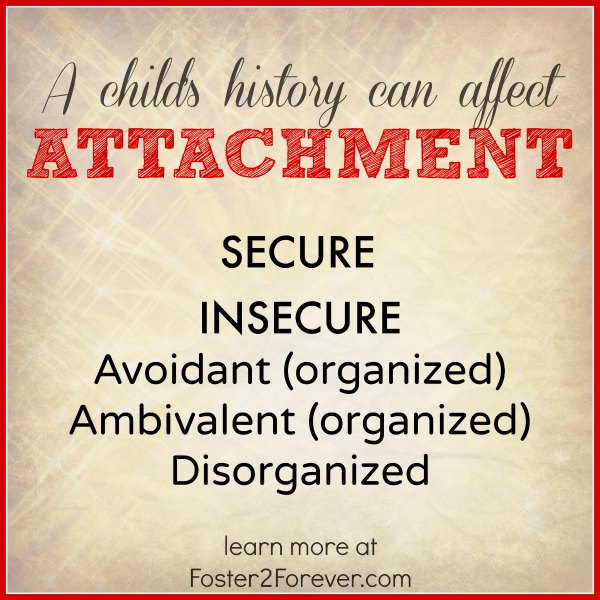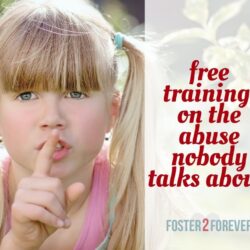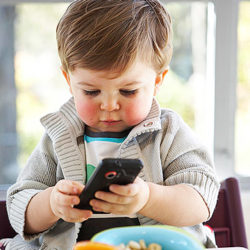Attachment can be defined in a number of ways, but can be simply defined as the connection that is developed between a child and caregiver. There are 4 patterns of attachment that a child can develop while being parented, but first…
How is attachment developed?
Attachment is developed through repeated and consistent interactions between a child and caregiver. If this cycle is repeatedly met (doesn’t have to be perfectly met, thank goodness), a child will develop a secure attachment.
When is attachment formed?
Attachment patterns are developed during the first 12 months of life!
Attachment patterns are usually stable over a person’s lifetime! (The attachment style a person develops as an infant will remain their attachment style as an adult UNLESS the person DELIBERATELY attempts to change that attachment style)
4 ATTACHMENT PARENTING TYPES
- Secure
- Insecure – Avoidant (Organized)
- Insecure – Ambivalent (Organized)
- Insecure – Disorganized
1. SECURE ATTACHMENT TYPE
How is Secure Attachment Developed?
- Touch, closeness, eye contact – Think of how you hold an infant and look into his face
- Emotional attunement – Tuning into the internal state of another
- Secure environment – Feeling safe and cared for
- Shared pleasure, play, and FUN!
Characteristics of Secure Attachment Type
- Seeks out caregiver when in need of physical or emotional support or comfort
- Ability to talk about a wide range of feelings, both positive and negative
- Feels comfortable exploring new environments while continuing to use their caregiver as a “secure base”
- Enjoys and is comfortable with physical and emotional closeness
- Positive beliefs about themselves, others, and the world
- Emotionally stable (emotional regulation)
2. INSECURE-AVOIDANT ATTACHMENT TYPE
How is Insecure-Avoidant Attachment Developed?
- The infant is repeatedly NOT soothed
- The attachment cycle is broken, and the distressed infant stops asking for help
- The infant is left unattended, in neglectful families or orphanages
- Sadly, the infant still produces stress hormones, yet doesn’t act stressed
- The infant learns not to depend on anyone to soothe or meet his needs
Characteristics of Insecure-Avoidant Attachment Type
- Emotionally distant and aloof
- Limited tolerance for feelings
- Inflated self-reliance to minimize need for connection
- Independent or inappropriately mature
- Lacks empathy
- The child’s solution is limited dependence on relationships. Take care of self. Deny or avoid feelings or emotions.
3. INSECURE-AMBIVALENT ATTACHMENT TYPE
How is Insecure-Ambivalent Attachment Developed?
- The distressed infant sometimes has his needs met
- The caregiver is inconsistent (due to their own unresolved attachment histories, or could be due to substance abuse or mental illness)
- Disruptions is care due to inconsistent or chaotic caregiving (also displacements via foster care)
Characteristics of Insecure-Ambivalent Attachment Type
- Crave attachment yet pushes away (push/pull behaviors)
- Clinginess (bottomless pit)
- Unable to self-soothe (as they get older) and need all soothing from an outside source
- Fear of abandonment
- The child’s solution is to keep caregivers in constant proximity
4. DISORGANIZED ATTACHMENT TYPE
How is Disorganized Attachment Developed?
- Caregiver is frightening, dangerous, or causes terror
- Child needs the caregiver for survival but is terrified of the caregiver
- Child cannot find a solution which results in disorganized attachment
Characteristics of Disorganized Attachment Type
- Significant difficulty with behavior, emotions, attention, and relationships
- Attempts to control their caregiver in order to make them more predictable
- Prone to dissociation
- 80% of abused children have disorganized attachment (Siegel)
To learn more about attachment and how your parenting can affect your child’s attachment, you can read Parenting from the Inside Out: How a Deeper Self-Understanding Can Help You Raise Children Who Thrive by Dan Siegel (Amazon affiliate link).





